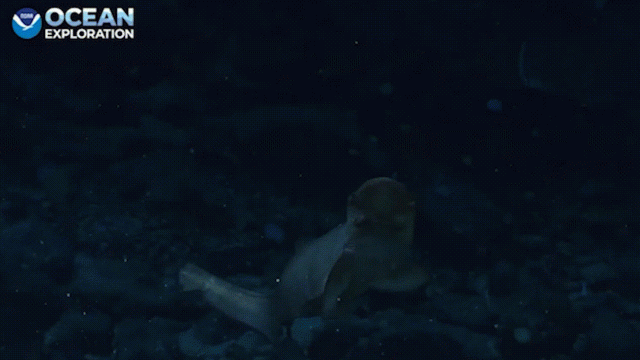Thousands of feet below the surface of the Atlantic Ocean, a journey of exploration and discovery is underway. Researchers from the National Oceanic Atmospheric Administration and partner groups are conducting one of the most comprehensive map and survey missions of the Mid-Atlantic Ridge ever done. The ridge is the world’s longest mountain range (undersea or otherwise), and remains mostly unexplored.
The so-called “Voyage to the Ridge 2022” began in May, and the third and final part is set to end this month. The mission’s dives with a remotely operated vehicle are being livestreamed on NOAA’s website (where you can follow along!); the last dive is scheduled for August 28.
With all the new maps, footage, and samples they’ve been collecting, scientists are hoping to get a better understanding of the geography, geology, and life in the mysterious, deep-ocean region. And thus far, the mission has yielded some stunning, wild, weird, and even unsettling results. Click on to see some of the most mesmerising deep-sea finds.
Salp House
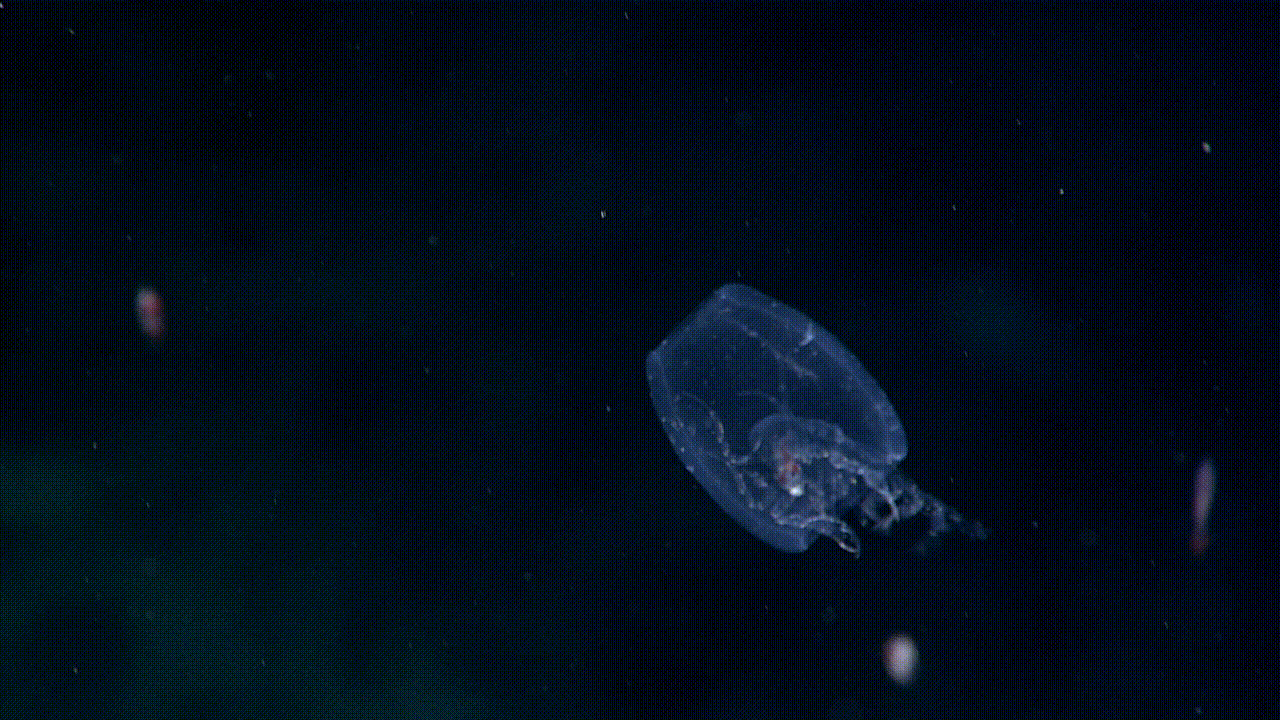
Monsters dwell in the deep ocean — or at least the inspiration for the monsters we make up. This clip shows a hyperiid amphipod, the reality behind the fictional, horrifying, extraterrestrial creations of the 1979 move Alien. These amphipods take over other creatures’ bodies for their own benefit. In this case, it’s commandeered another filter-feeding invertebrate, known as a salp.
“It will capture those salps, and basically rip the inside of the salp out, but keep enough of the cells on the inside that it’s more or less alive. And then [it] uses the salp as its own little house,” said the NOAA researcher narrating the full video.
“I think it’s rare that you see one animal wearing another animal as a hat,” said one researcher on the initial livestream.
In a rather ominous response, another scientist then chimed in with, “not in the deep sea.”
Sea Squirts
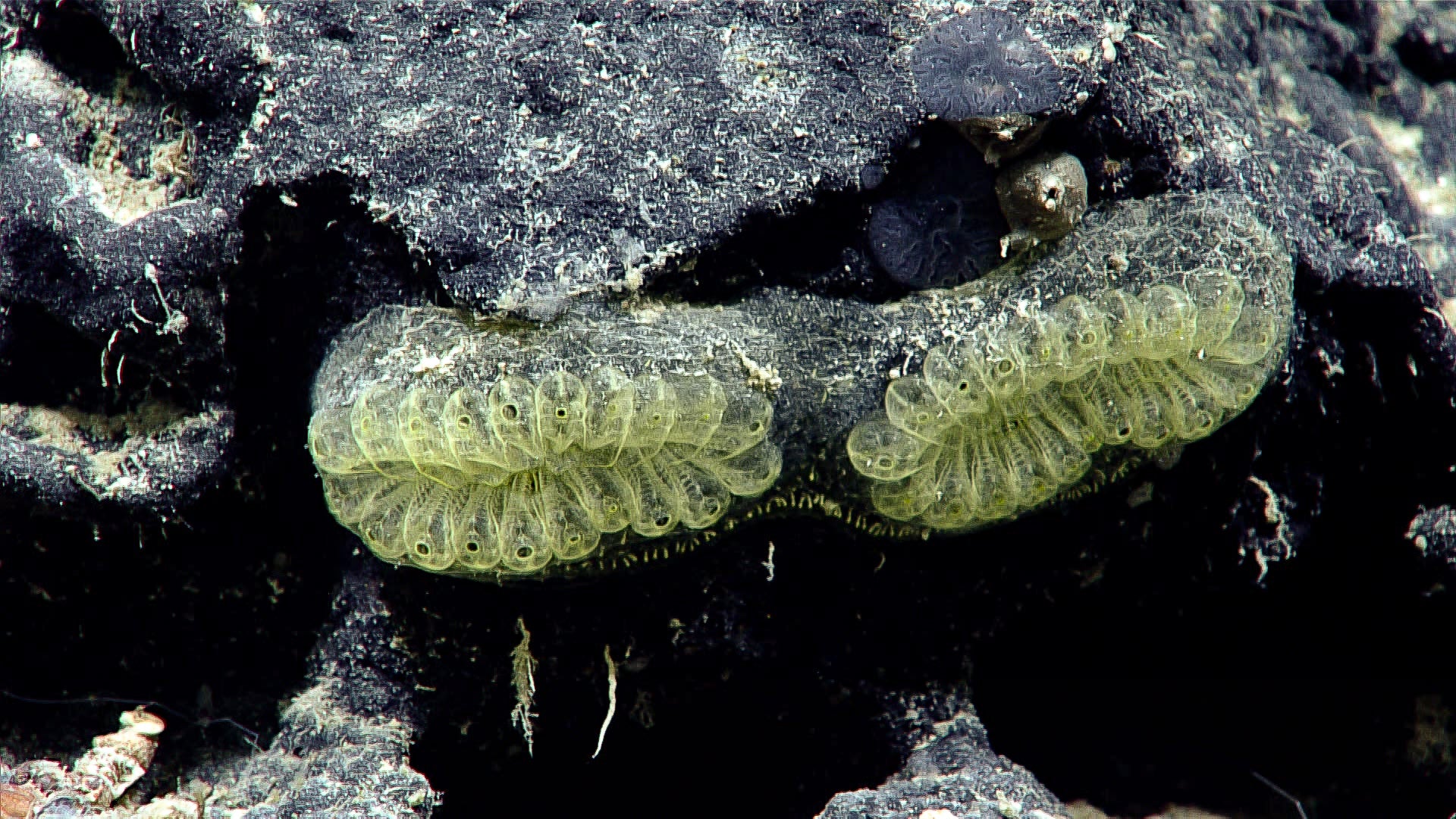
Closely related to the zombified salp pictured in the last slide, these tunicates (or “sea squirts”) were clustered together at a depth of more than 1,767.84 m. Though they’re animals, sea squirts live most of their lives unmoving, similar to corals. Some species produce natural products of intense interest to people. One type of sea squirt, for instance, makes a compound used in cancer treatment.
Sea Spider

Sea spiders like this one are coral predators, snacking on the polyps before they can grow into large undersea scaffolding.
Alfonsino
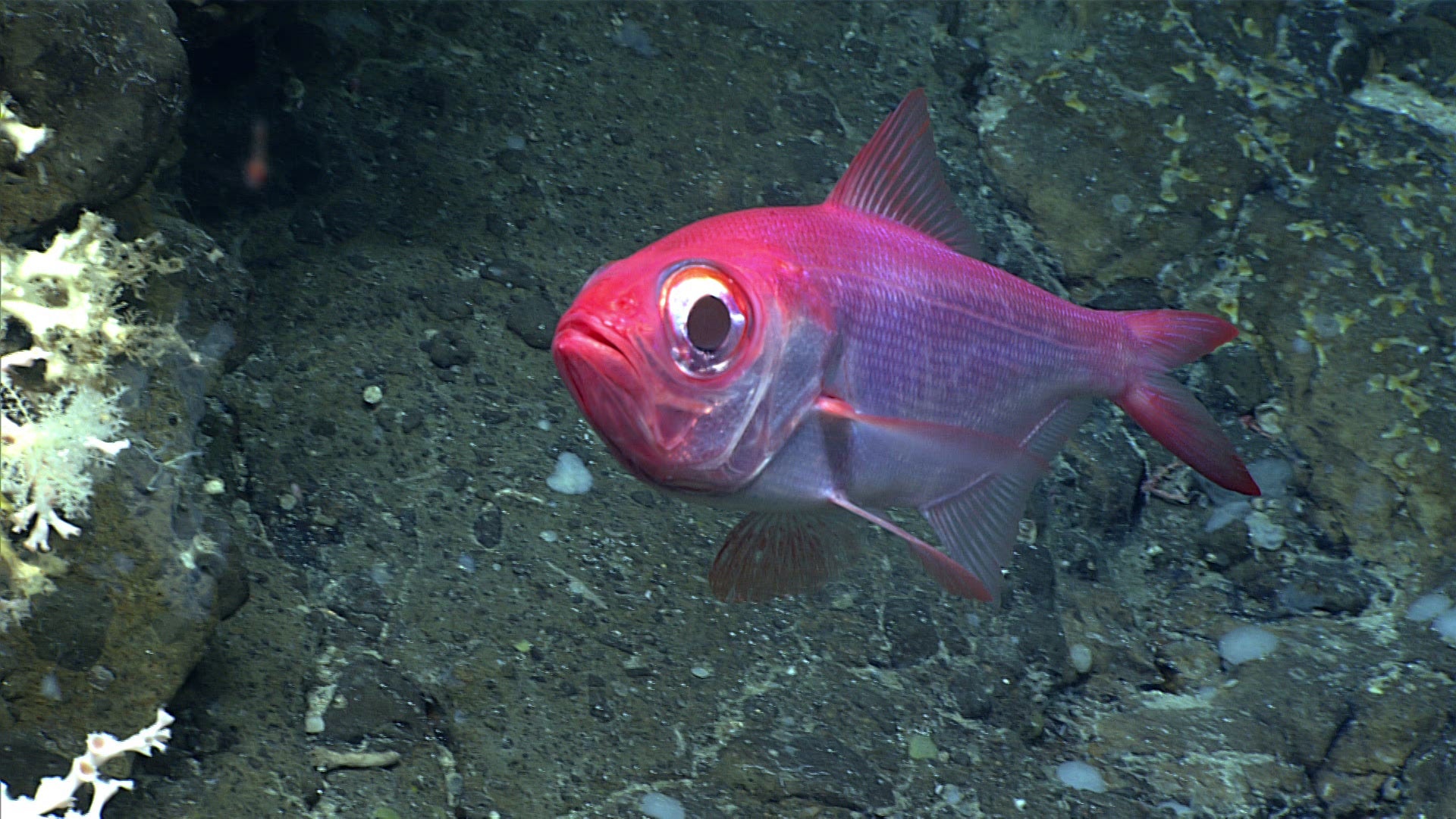
Although it looks pink here in the ROV’s spotlight, this brightly alfonsino is actually scarlet red. Also known as red breams, these fish are often targeted by commercial fishers and are at possible risk of being overfished.
Elaborate Coral

This coral is aptly named Iridigorgia (get it, cause it’s gorgeous). This one looks almost like an explosion of fireworks.
Shrimp in Coral
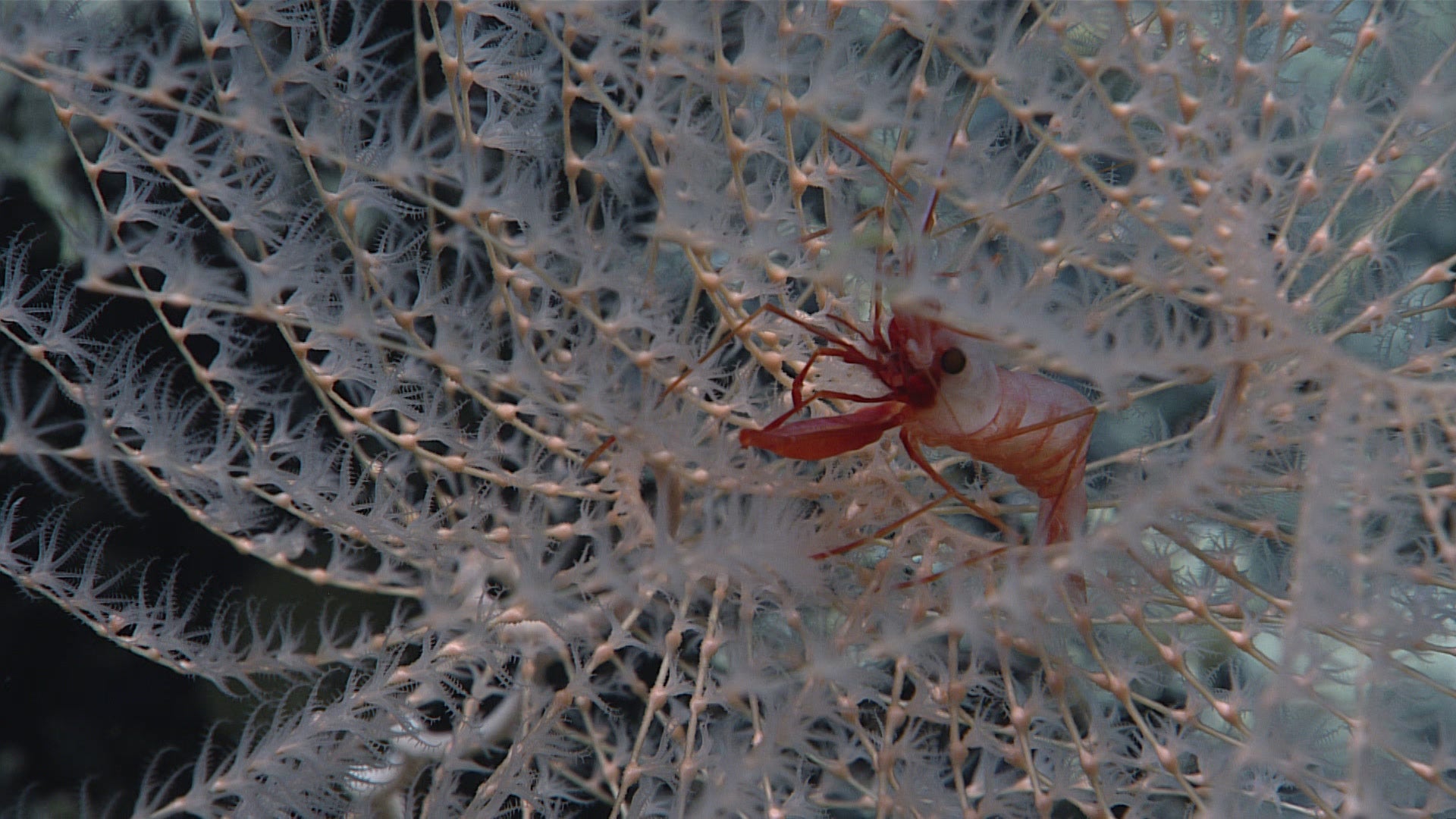
A shrimp peeks out from another example of an Iridigoria coral.
Grenadier
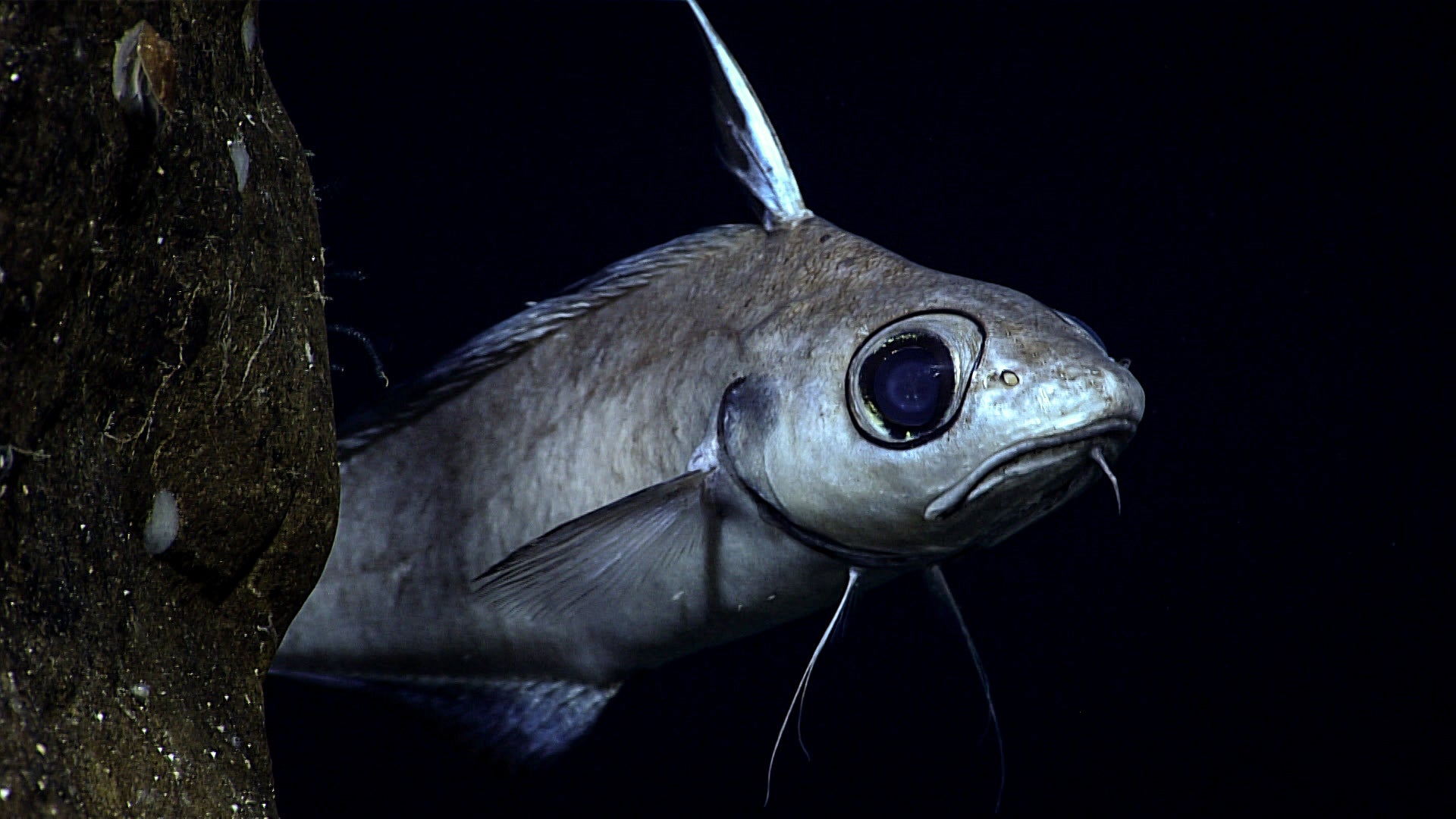
This grenadier (or rattail), a member of one of the most abundant deep-sea fish families, came eye-to-lens with the ROV. Though common, little is known about their lives because very few (or possibly no) grenadier larvae have ever been collected.
Sea Cucumber… Pooping
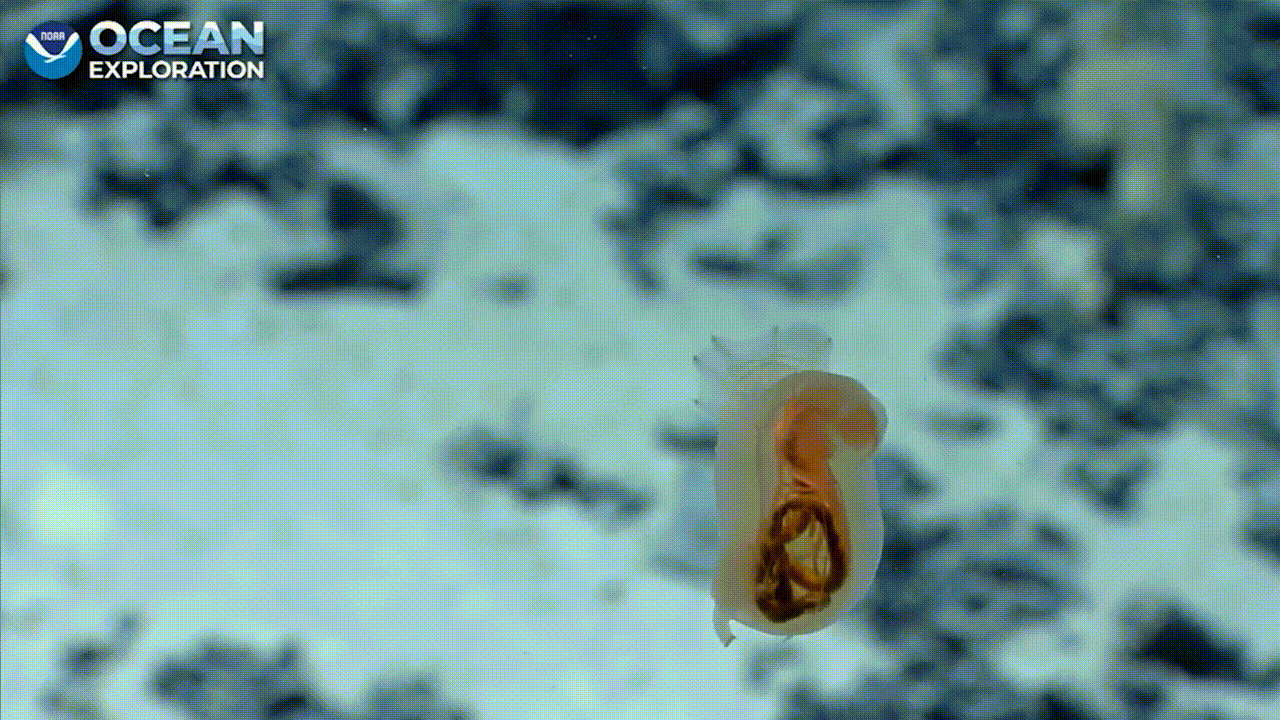
The majesty of life: Watch this otherworldly sea cucumber drop a deuce.
The graceful swimming style of this sea cucumber may be hypnotising, but it can’t fully distract from the apparent waste that falls from its bottom(?).
Rosy Acorn Worm
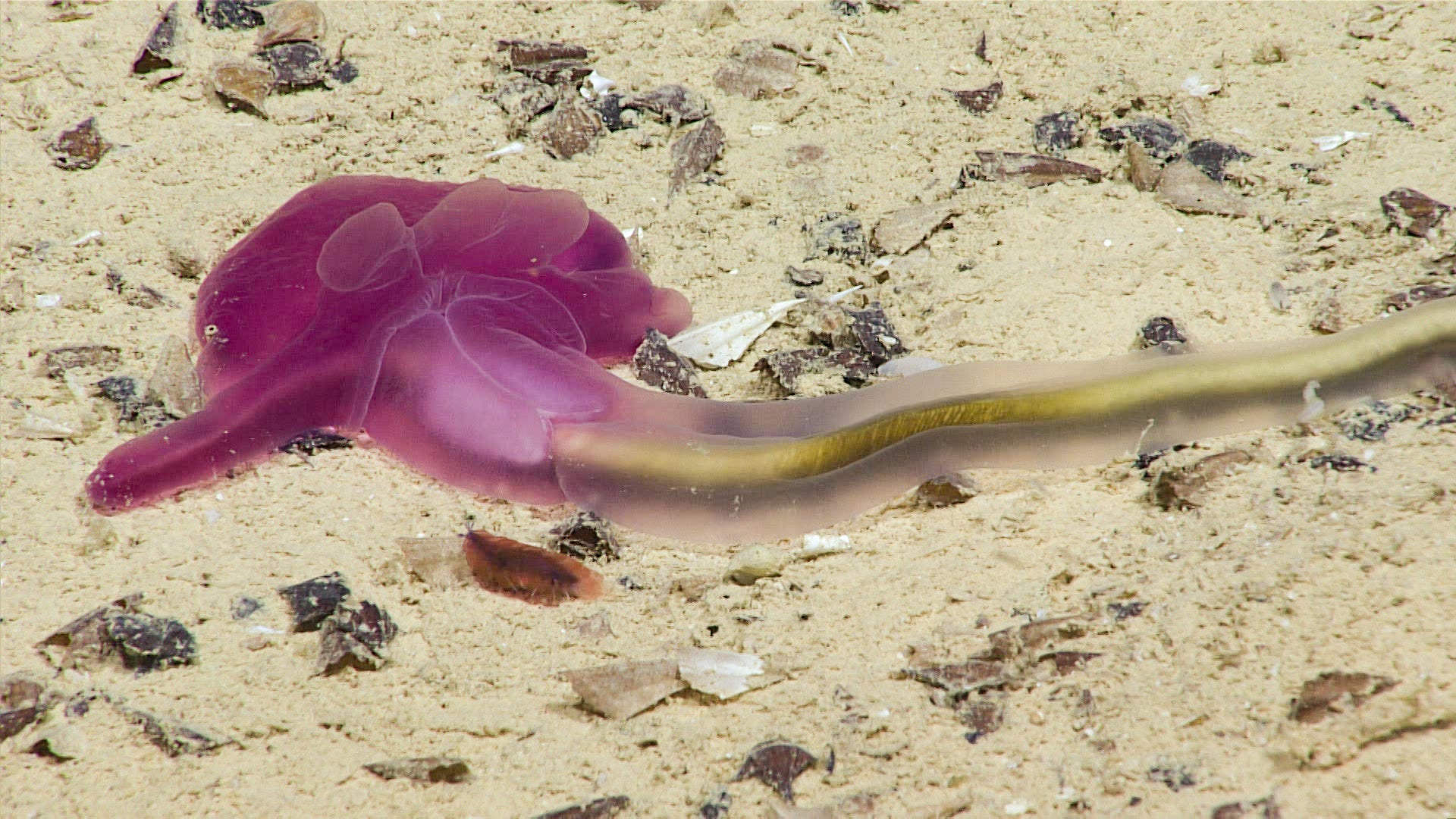
Speaking of poop, this rosy acorn worm is carting around a whole lot of it in its long, trailing intestine. The worms are “deposit feeders,” meaning they munch of all the sediment and organic matter that no one else wants at the bottom of the ocean.
Their digestion process is transparent to an unorthodox degree, as their see-through bodies allow a clear view into their full guts. The trait is such a hallmark that the invertebrate is sometimes called the “spiral poop worm.”
Orange Roughy
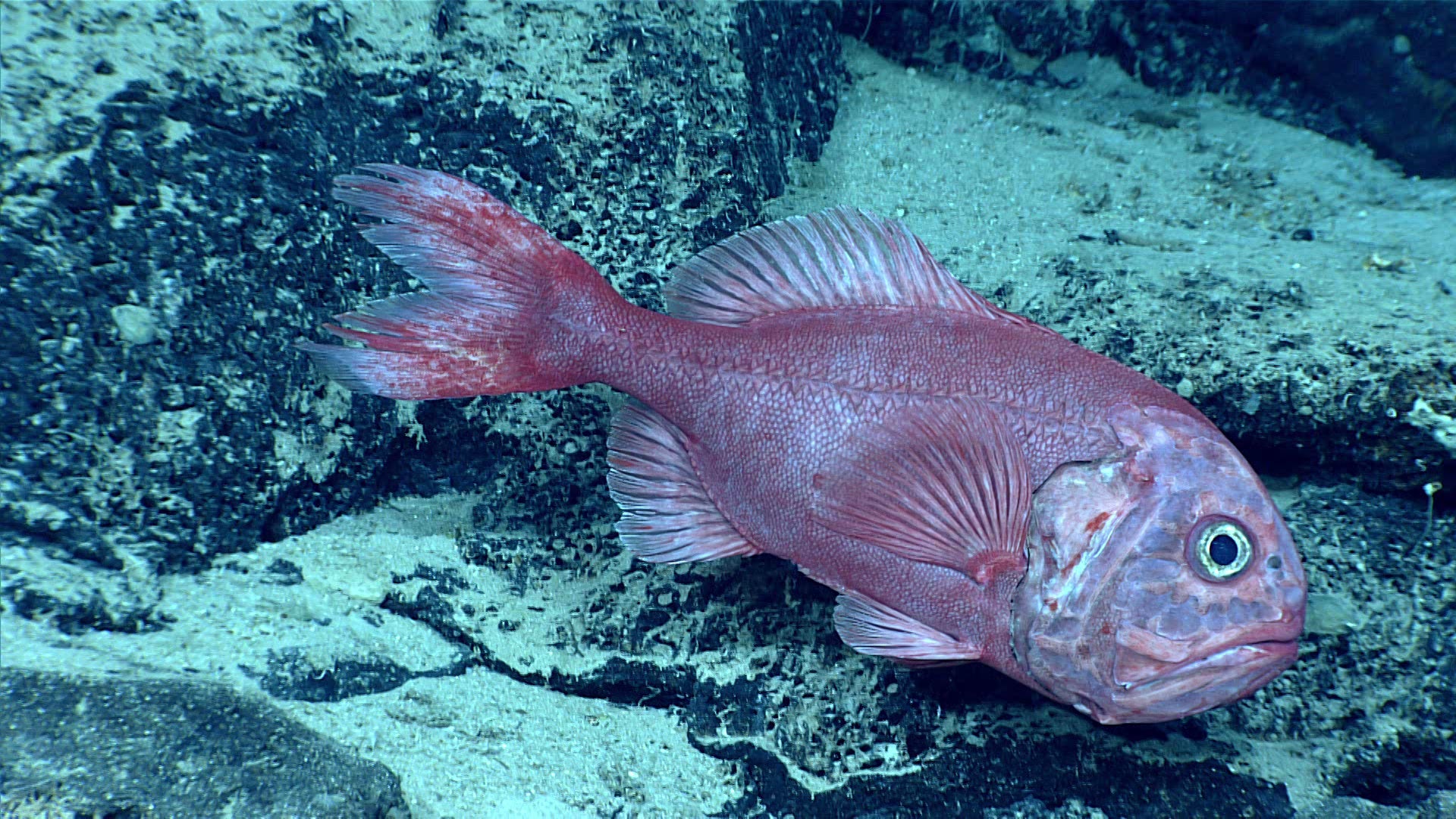
This grumpy-looking fish, an orange roughy, could be more than 100 years old, according to NOAA scientists. The species is slow-growing, slow-moving, and is known to live for more than 200 years. Scientists estimated this one’s age based on its size.
Purple Sea Cucumber
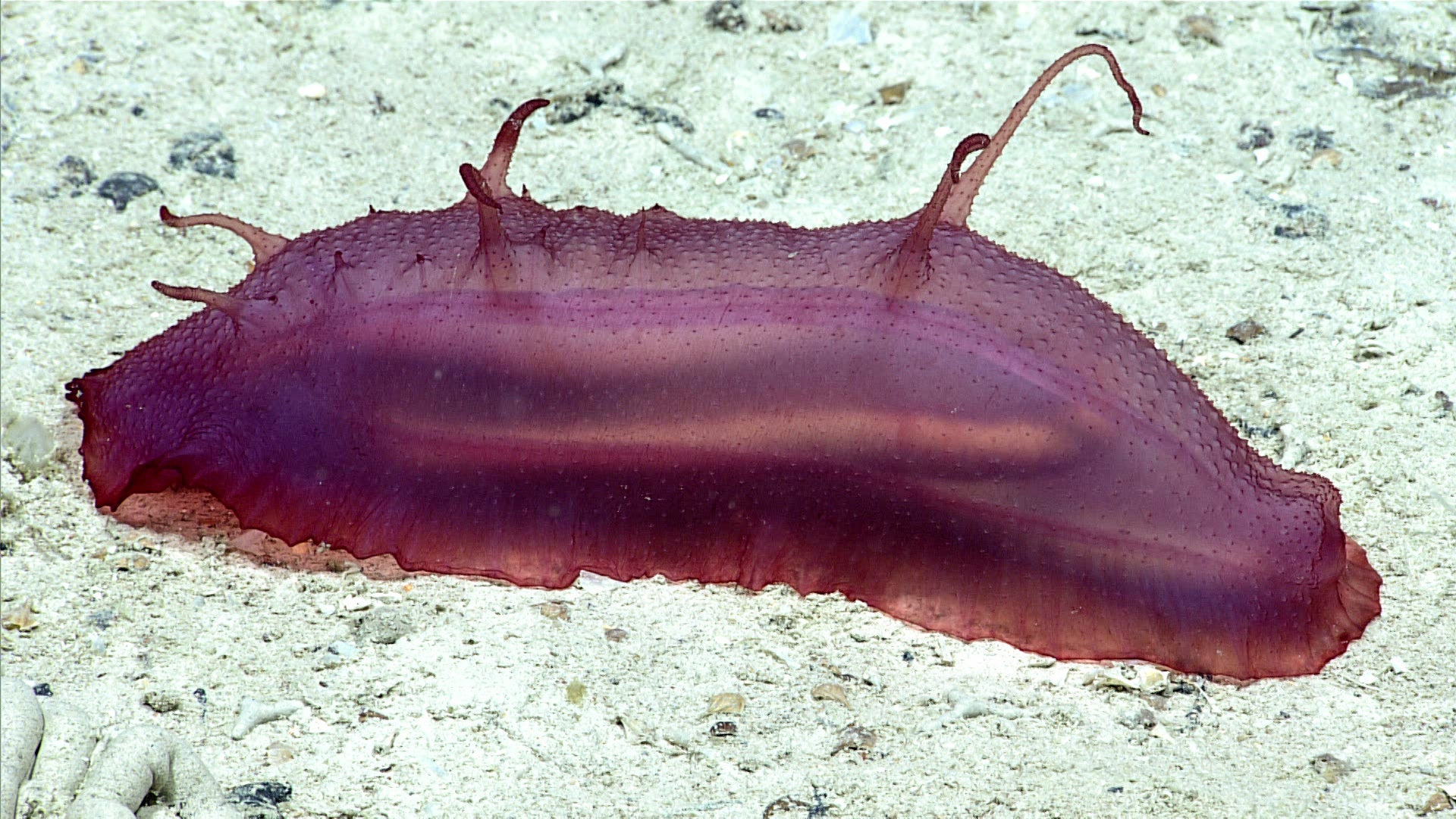
This purple sea cucumber was photographed basically just chilling out at a depth of 1,919.94 m.
Atolla Jelly
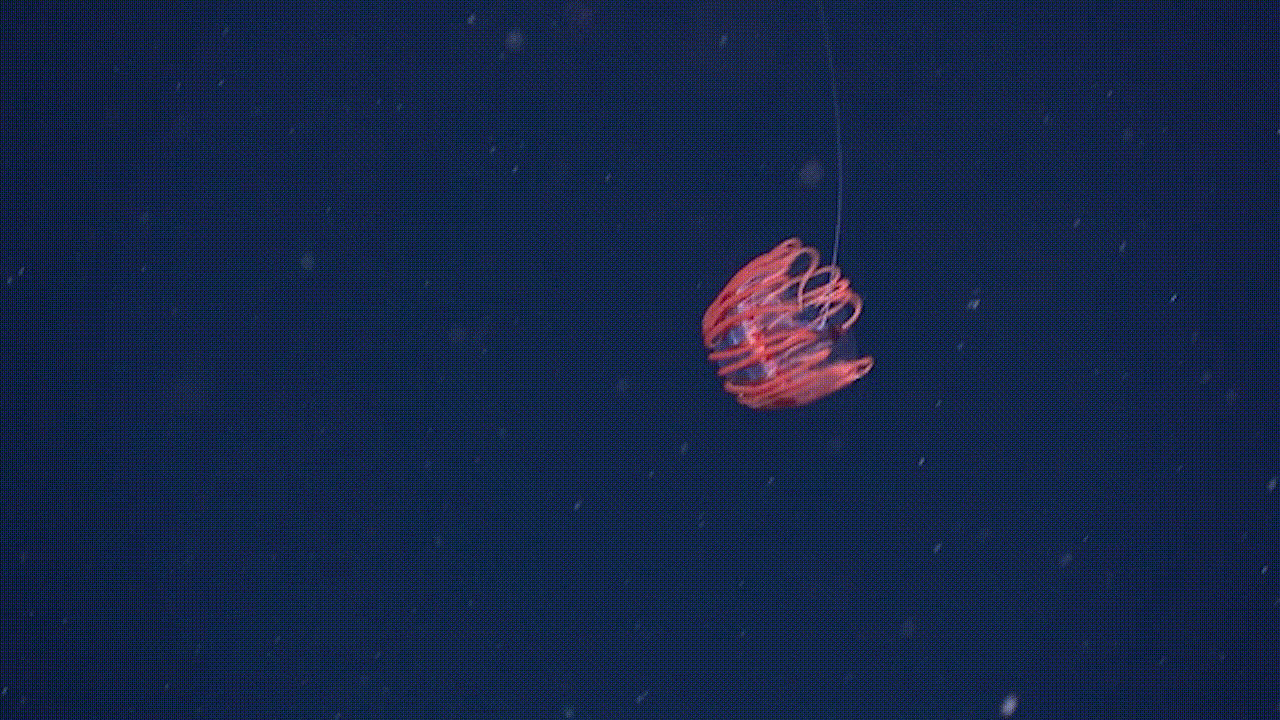
Atolla jellies like this one live in the ocean’s twilight zone, where red light doesn’t penetrate. So, without the bright ROV around, this jelly would be nearly invisible. However, Atollas are also bioluminescent, able to make their own light when they need to stand out. They can produce flashes of bright blue, useful for startling predators or luring in prey, according to the Woods Hole Oceanographic Institution. This ability means they’re sometimes called alarm jellies.
Note: that’s not a piece of fishing line or dental floss. Atolla jellyfish have one extra-long and thin tentacle that’s used to help capture prey and possibly for reproduction.
Mysterious Holes
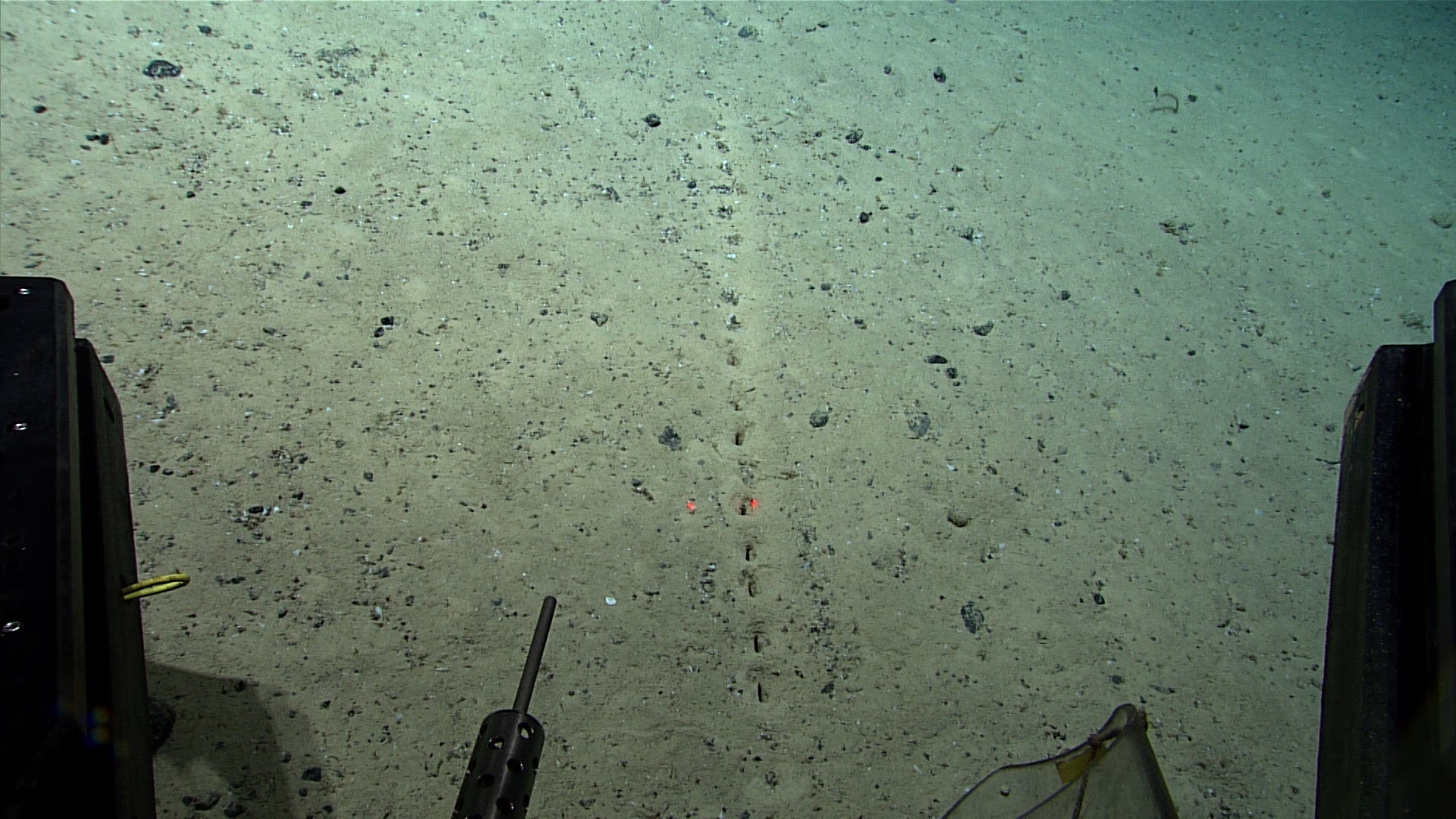
Expedition researchers noticed these very orderly holes on the seafloor four separate times on during the ninth ROV dive. The scientists aren’t sure what caused them (or even if they were produced from above or below), but believe they are the result of natural causes.
“If you look in the fossil record, there are also indications of similar sorts of features. And so this suggests there is an organism that has been making these sorts of features for a very long time,” said one researcher in a NOAA video on the topic.
Yet, even though there’s past evidence of similar linear holes in the seafloor, we still don’t know where they are coming from. Which highlights just how little we know generally, about ocean ecosystems.
“We’ve got no idea what makes these things… it’s a mystery, basically,” said Michael Vecchione, a zoologist at the Smithsonian’s Natural History Museum, in the NOAA video. He thinks the most likely explanation may be a tunnelling organism.
Cusk Eel

It’s a face that’s hard to love in a place that’s hard to get to. This cusk eel was seen almost 1,524.00 m down.
Mystery Jelly
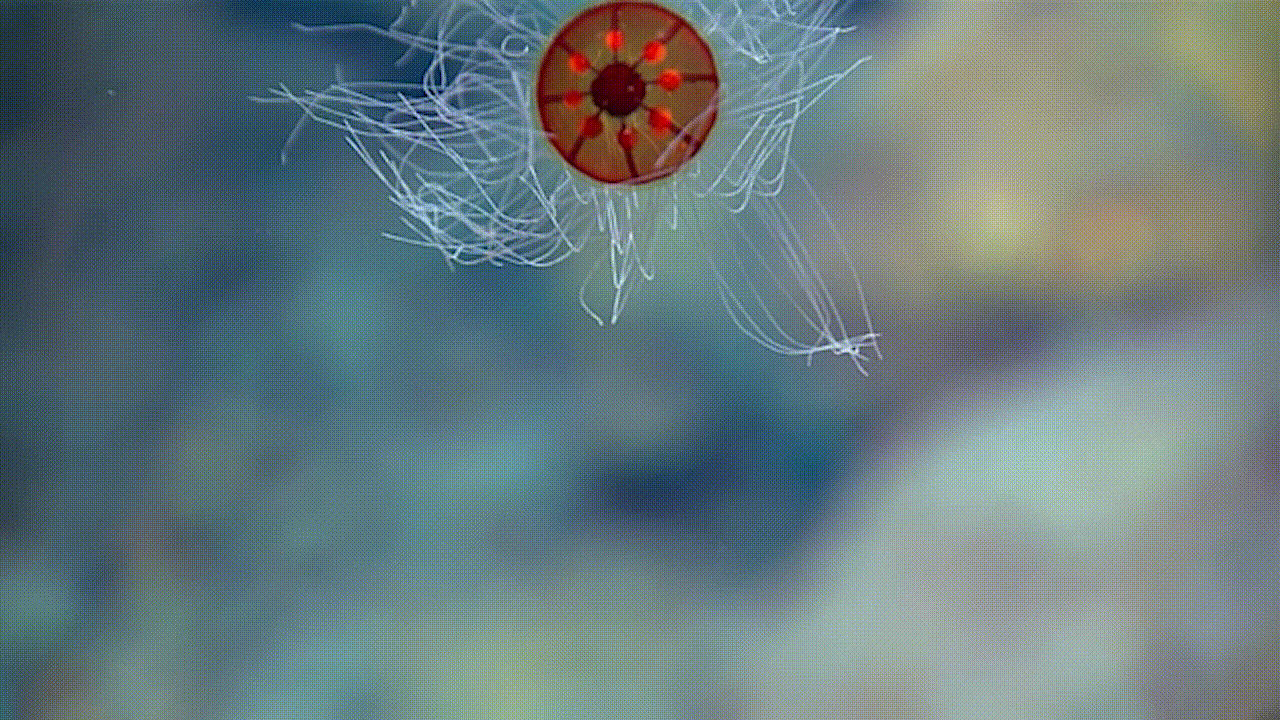
Researchers couldn’t immediately identify this species, but it’s a member of the genus Crossota, a group of jellies known for their bright colours, bioluminescence, and vermicelli-noodle-esque tentacles.
Sea Star Feasts
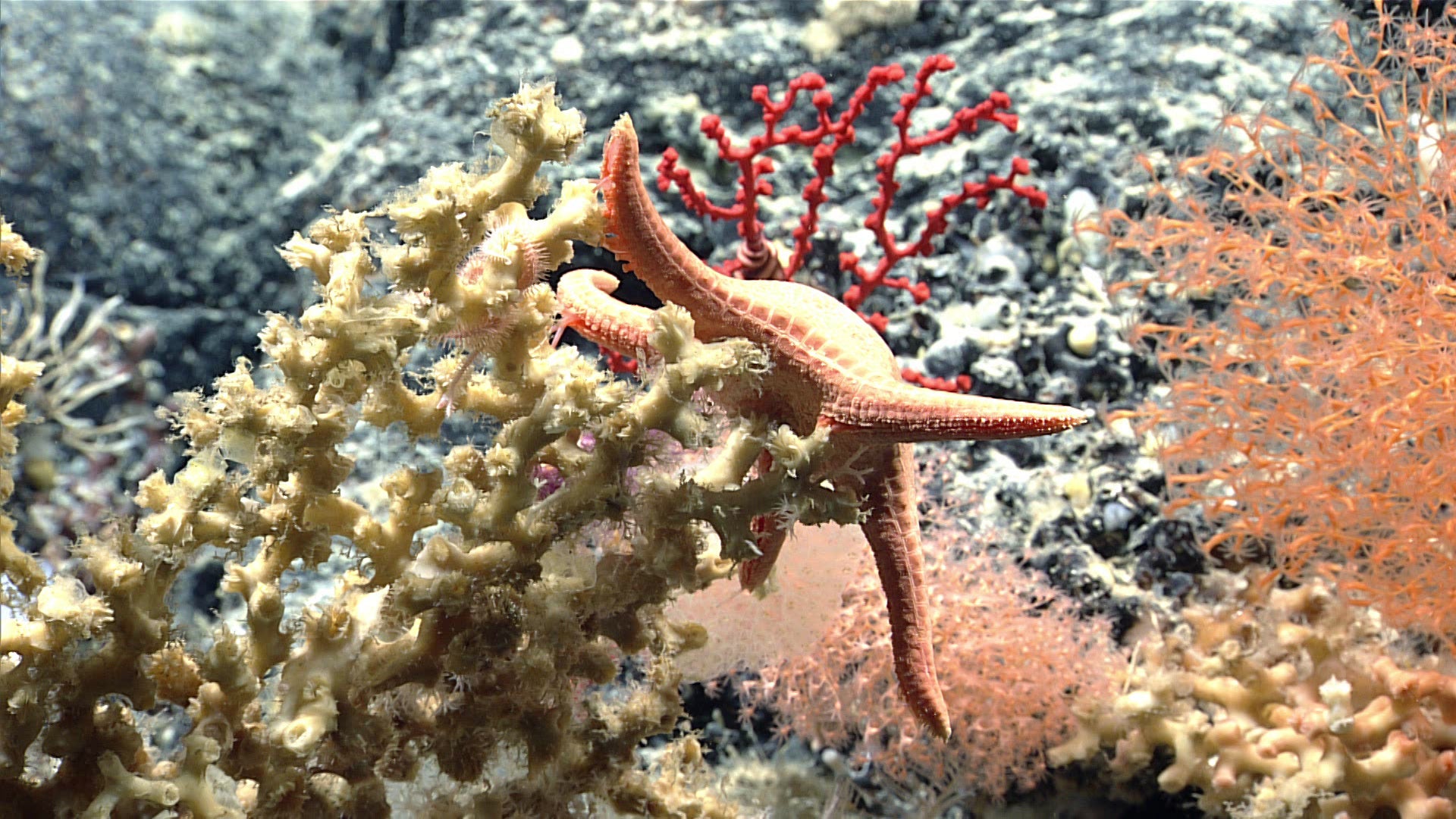
From NOAA:
Sea stars are common predators of coral in the deep ocean. We observed this one feasting on a stony coral during the sixth dive of the second Voyage to the Ridge 2022 expedition at 1,755 meters (1,755.04 m) depth. Sea stars feed by everting their stomachs from their mouths and extending them over corals, dining on a coral’s polyps and tissue.
Not an Alien
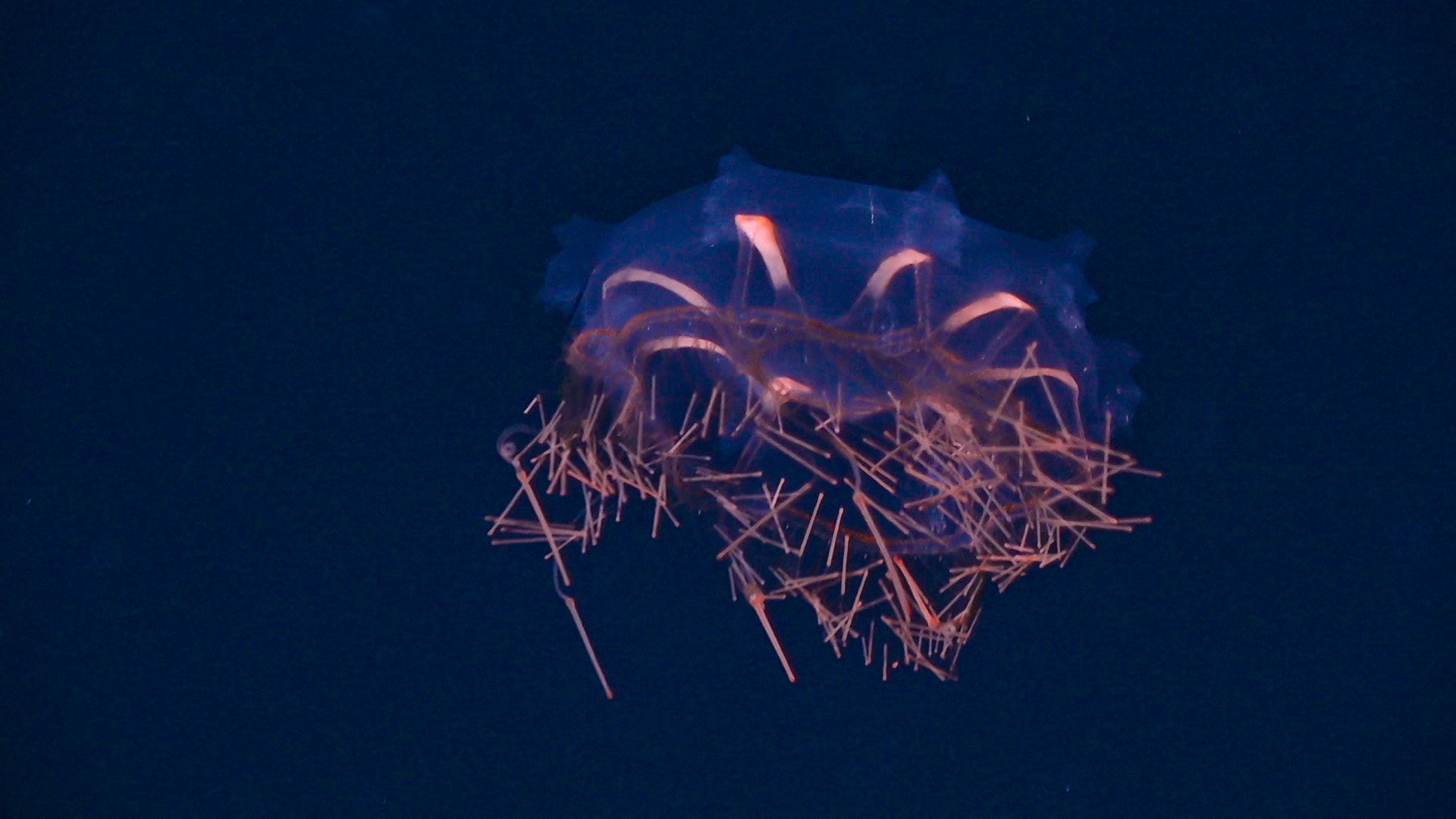
This striking, so-called “spiny jelly” (Halicreas minimum) represents the only known species in its genus.
Goosefish
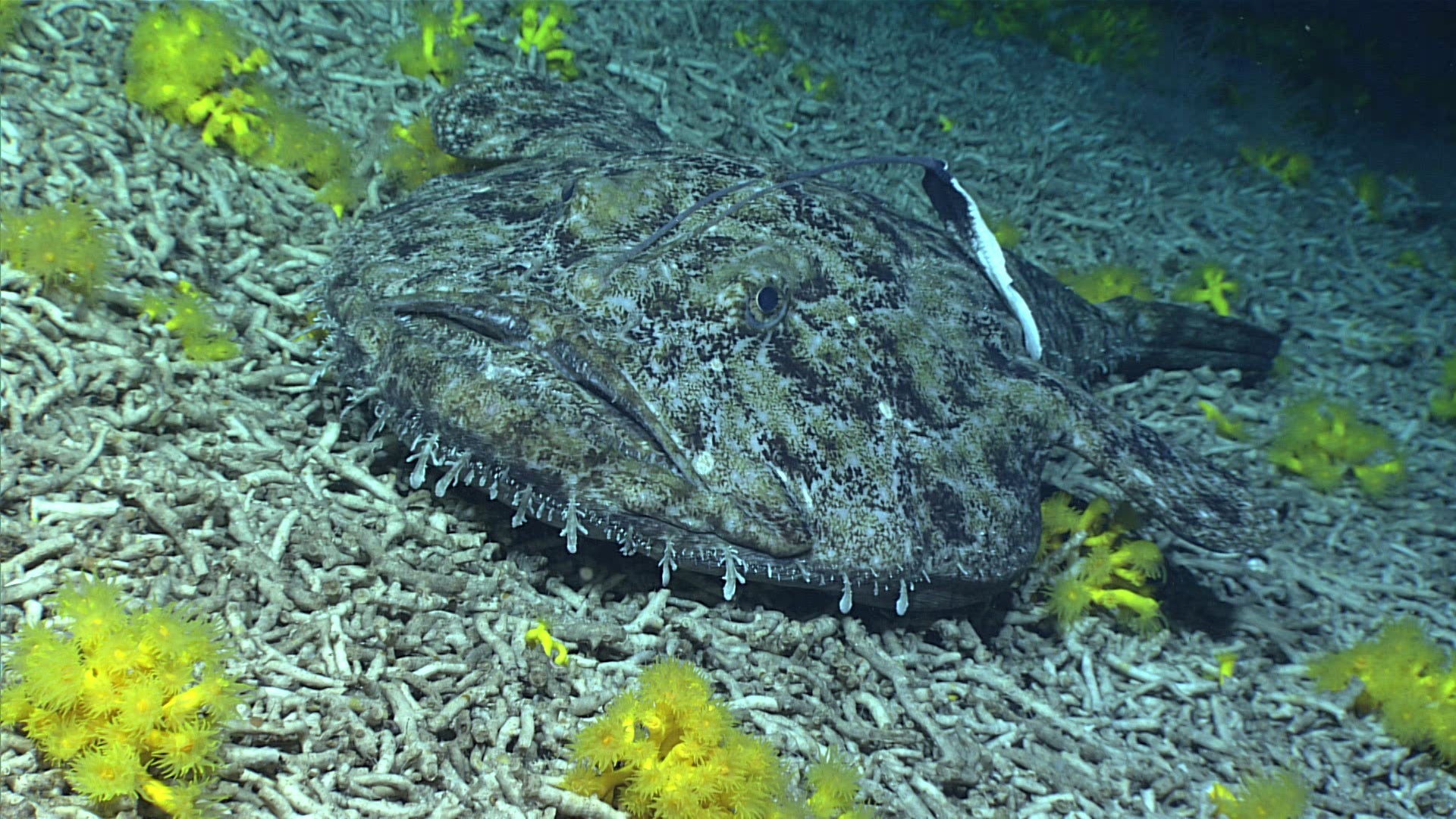
At the end of their very first ROV dive, NOAA scientists spotted this goosefish, a type of angler fish that sits and waits for prey, using its lure to attract victims on the sea floor. Although the fish was a weird and welcome site for mission biologists, it was also an indicator of environmental loss.
The angler was in a field of rubble at the top of an underwater seamount, in an apparently decimated coral field — which is a preferred type of habitat for goosefish. Prior to reaching the summit, scientists had expected the area to be teeming with living corals, but instead they found signs of destruction. They didn’t immediately know the exact circumstances of how all the coral was damaged but theorised that commercial fishing or other industrial activity may have been at fault, a NOAA spokesperson told Gizmodo in an email.
Burrowing Anemone

This burrowing anemone (order Actiniaria) sat more than 3 km down in the Atlantic Ocean.
False Boarfish

From NOAA:
We got a very, very close look at this False Boarfish at 1,660 meters (1,659.94 m) depth during Dive 06 of the second Voyage to the Ridge 2022 expedition, providing a good reminder of the amazing imaging capabilities on remotely operated vehicle (ROV) Deep Discoverer (and the steady hand of the ROV pilots)!
Octocoral
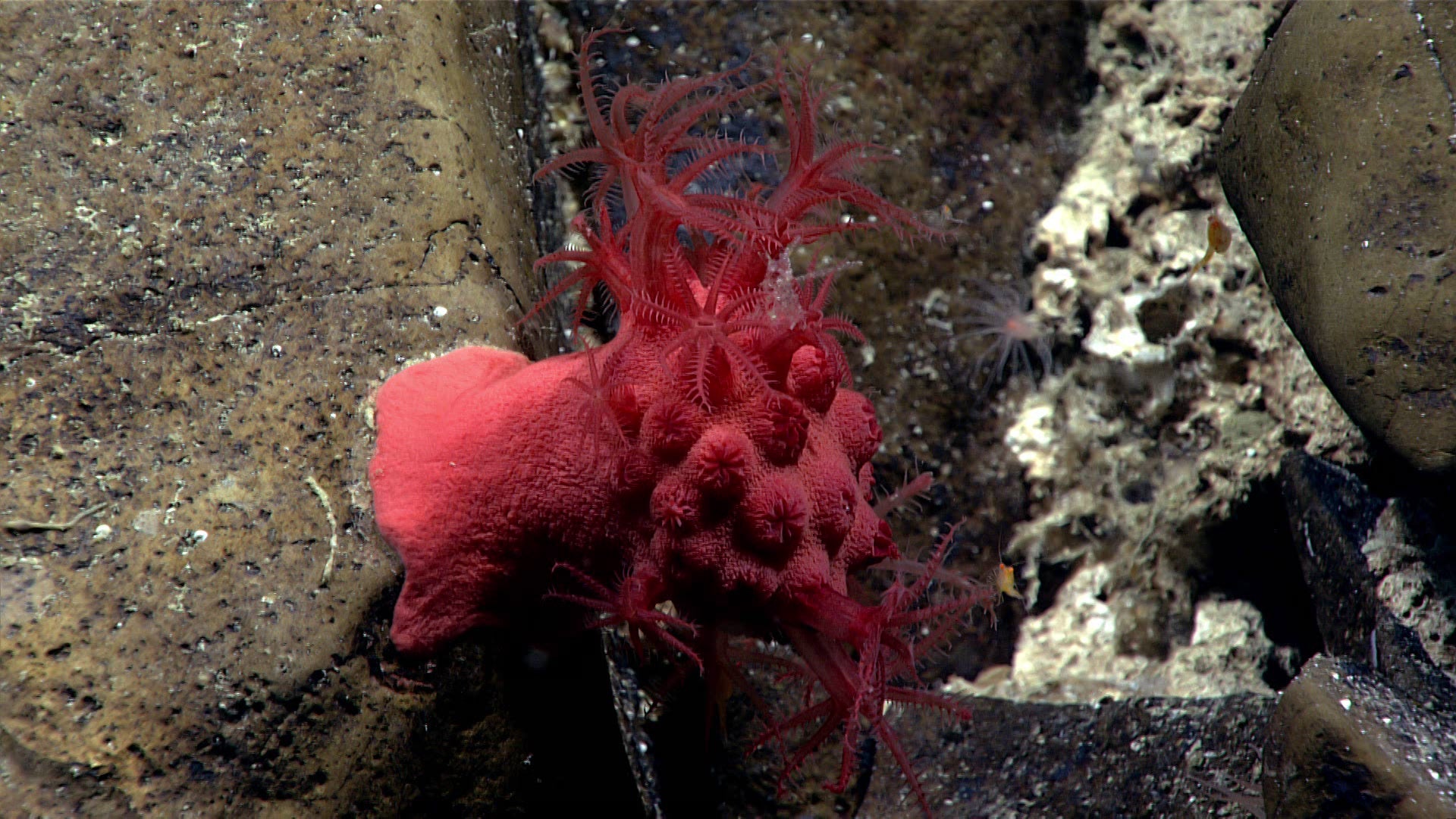
Octocorals like this one come in all sorts of different bright colours and shapes. They are non reef-building, or soft, corals. They might not help build the hard undersea scaffolding that most people associate with coral, but they are beautiful.
Glass Sponge Habitat
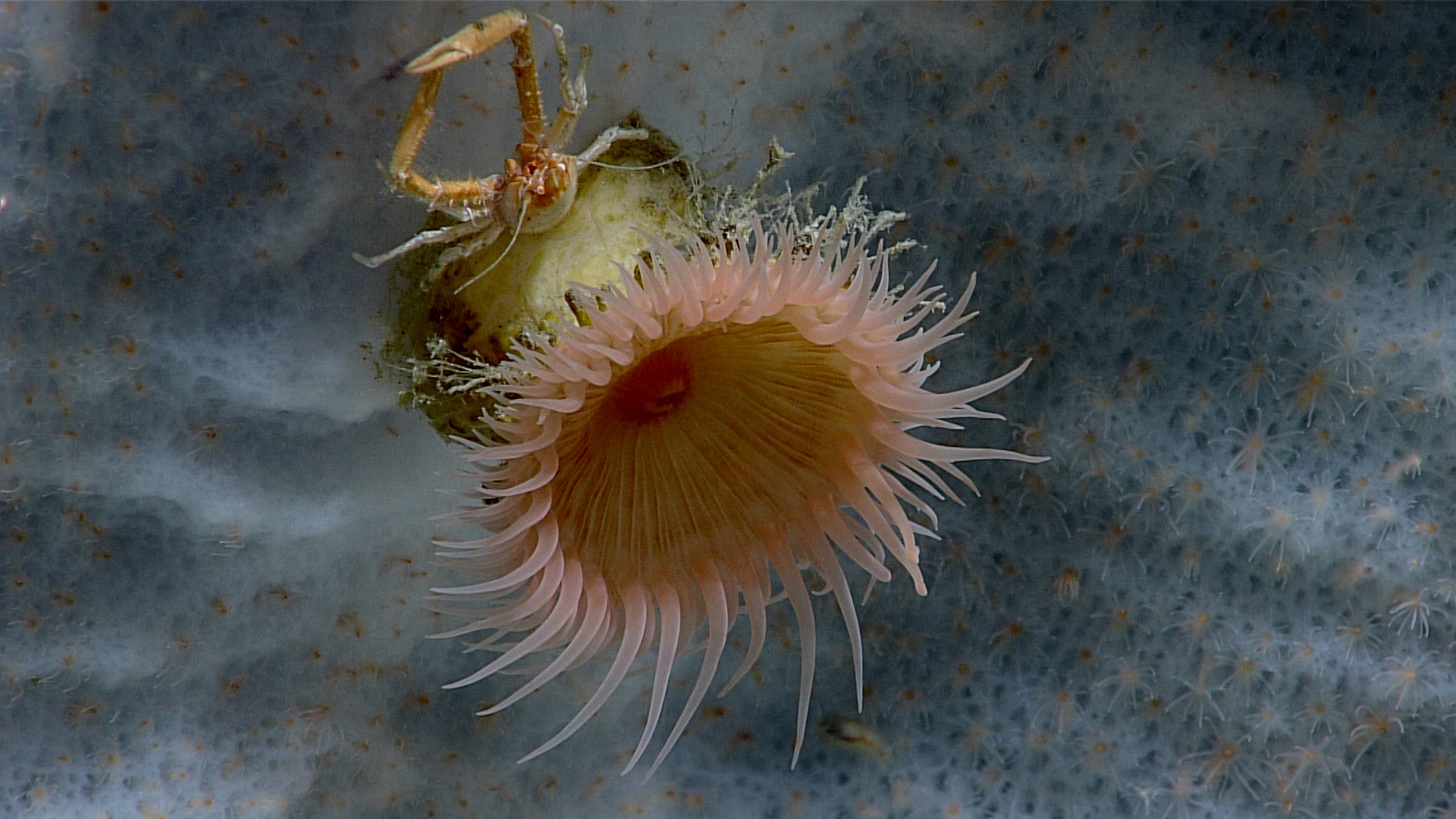
This picture is a preview into an entire mini-ecosystem. There’s a glass sponge (visible as the pale matrix of interwoven fibres in the background), an anemone, and a squat lobster. Glass sponges are so named because their tissue contains silica particles, the same compound that makes up glass. The sponges are filter feeders, but they do more than just sit and eat. Their intricate structures make them ideal homes for many other undersea critters.
Marine Rainbow
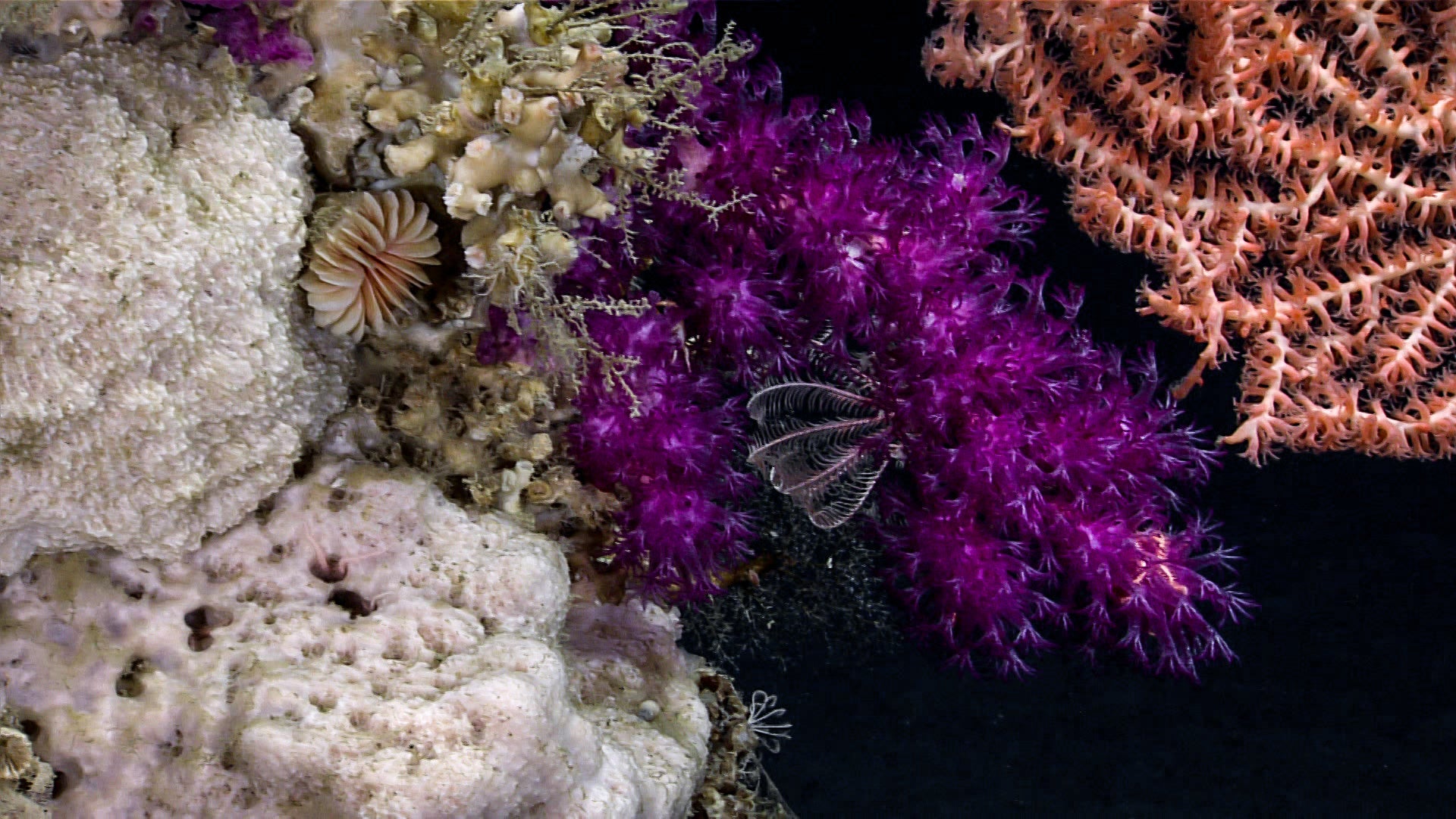
Each organism scientists have encountered so far on this NOAA dive is incredible in its own right, but so is the larger picture — taken in altogether. This one image captures a colourful array of ocean life in a single frame. There are gastropods, stony and soft corals, brittle sea stars, crinoids, and more.
